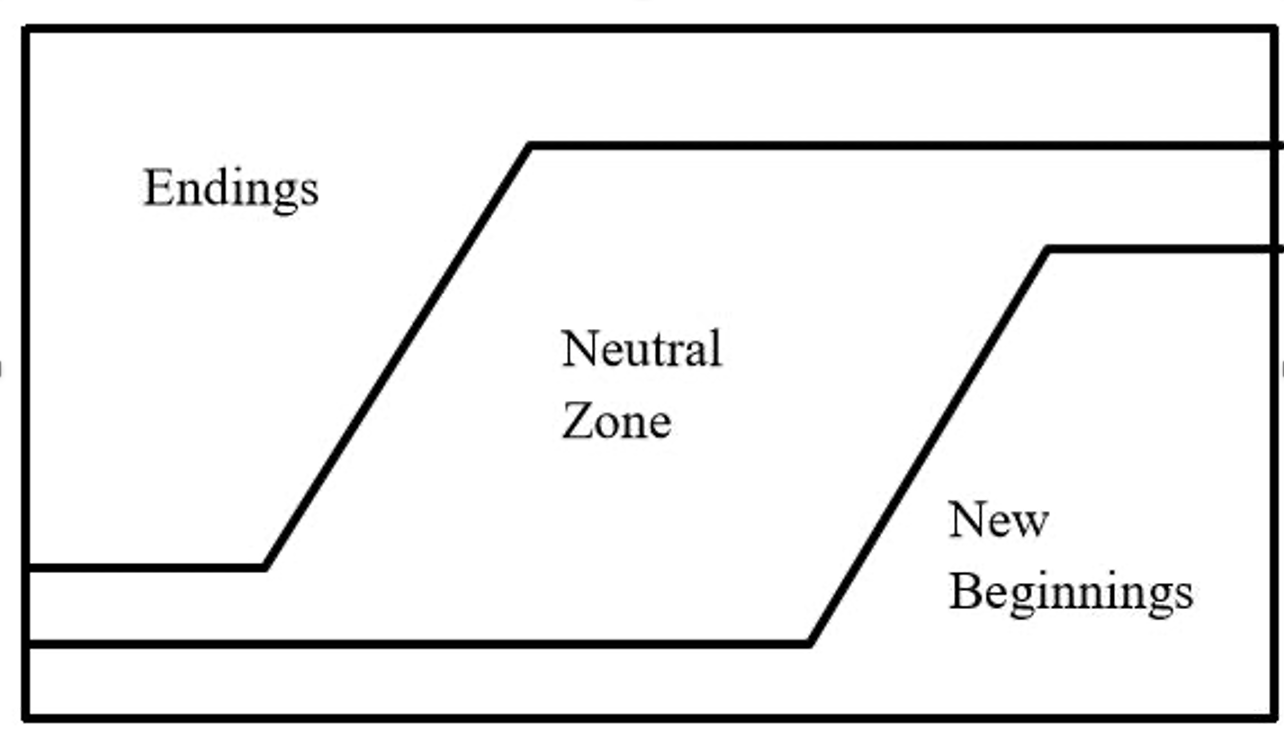
Patrick Lencioni’s Table Group runs the “At the Table” podcast and recently aired the “Change Is Easy, Transition Is Hard” episode. Lencioni’s team highlights that people are not scared of change but rather the transition that comes with change. Why is that? Change is what we understand intellectually as good or needed; transition requires alignment of our hearts and emotions with what our head wants. To ensure alignment, there is a methodology to follow to manage the transition.
“At the Table” episodes 80 and 81 go through the transition model developed by Bill Bridges. We’ve supplied images and links to both the Table Group and William Bridges Associates for you to check out.
The nature of scaling tech companies is constant change. Success is predicated on being agile: having a vision for change and knowing what good should look like, and executing off of that vision. “How” companies execute transition is what differentiates them.
Take the example of a company that is going after a new market segment, requiring everyone (sales, marketing, CS, product, services) to learn a new customer language, sales model, and value proposition. The change is needed because their technology is ripe for that market, and they see this as an opportunity to grow strategically. Everyone sees that the company should seize the market opportunity. But transitioning everyone to learn a new market and buyer, sell and market differently, and not rely only on what is tried and true is difficult.
The transition model recommends that leadership understand that with every new beginning – even a positive one (a new strategy, an acquisition, a new leader, etc.), there is an end to something known. With the end, there are feelings of loss.
- What they are losing with change: The transition model suggests seven types of loss: Loss of identity, turf, structure, control, future, attachments, meaning. Referencing the example of the company moving into a new market, your executives and sellers who came from your core market may miss the shared industry domain or experiential connection they have with their core market buyers as they shift to engaging new buyers. NOTE: The Table Group emphasizes that before going forward, leaderships’ and managers’ responses to team members’ loss should be acknowledged with both CARE and CONCERN. It is important to validate that there is some form of loss, so that team members can then think of their response to the loss.
- How to respond: An individual’s response to loss is summarized with “Four Rs”: Restore, Replace, Redesign, Relinquish. An individual’s response to entering a new market may be to start reading a lot of articles about the new industry and asking their new buyers a lot of questions, which helps discovery. This approach not only replaces their market awareness with new market information, but it also redesigns their approach to selling by leading with questions.
- How to gain closure with a marker or deed: With every loss, people need closure. The Table Group shared dramatic examples in the podcast about how the explorers to the New World would burn their ships – no going back. But for this example of a person shifting to a new market, closure might include updating their LinkedIn profile with new market information or getting rid of industry-specific language in their titles.
Once they have realized there is no going back, the organization enters the “Neutral Zone.” It’s not exactly the “Twilight Zone,” but without paying attention to managing the team through a period of discomfort, it can be just as cringey or scary. However, the Table Group reassures us that the time of greatest doubt and uncertainty brings forward the most innovation and growth. So embrace the discomfort and … as you read on, get ready to repeat yourself a lot.
During the Neutral Zone, your team will feel like they are floating. Their feelings of insecurity during the transition will make them long to go back, give in, or “quit and stay” (which results in silent non-contribution and/or non-compliance). To get hearts and feelings on board with the head-driven decision/strategy, leaders and managers need to constantly and consistently remind the team of the “Four Ps”:
- Purpose – Team members need to know why, and they need to be reminded all the time because they forget. “We need to enter into a new market because our sales are flat and the tangent market gives us an ability to grow.”
- Picture – Give them an image or “True North” of what it will look like when the organization makes the needed change. “If we grow into the new market as we anticipate, we project at least 50% growth in new revenue. With more productivity, the morale and compensation of a winning company will return.”
- Plan – Create practical milestones and operational focus to make the change occur. “Next week, we will have a new pitch deck and ICP identified for improved demand gen and prospecting. At the end of the month, we are having a pitch contest – winners get $100 on the spot!”
- Part – Make sure everyone has a part to play in the transition plan. “We need you and your team to constantly ask your new prospects questions about their business problems, validate whether our message is resonating, and provide that feedback to marketing, sales, and product, so that we can all align and quickly pivot our messaging.”
Passing through the Neutral Zone effectively means a new beginning. We recommend including milestones in your plan that are leading indicators of change taking hold.

We recommend that you take the time to listen to episodes 80 & 81 of the “At the Table” podcast to keep your teammates’ hearts and minds aligned to the “why” they must go through transition for positive change.










